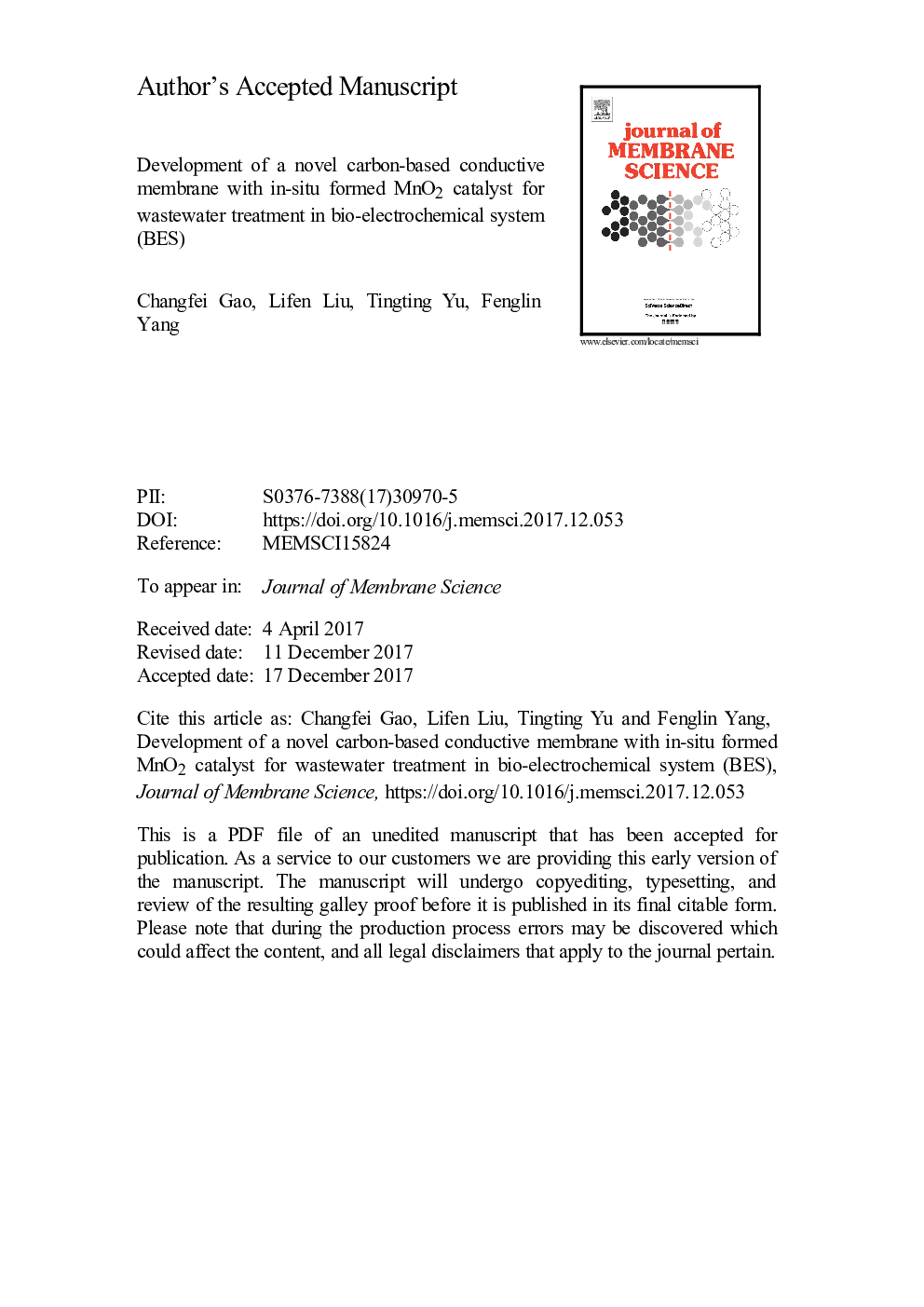| Article ID | Journal | Published Year | Pages | File Type |
|---|---|---|---|---|
| 7020234 | Journal of Membrane Science | 2018 | 28 Pages |
Abstract
A new carbon-based RGO/PVDF/MnO2 conductive membrane was developed to treat high load wastewater and recovery energy through bio-electrochemical system (BES), combining Membrane bioreactor (MBR) and Microbial fuel cell (MFC). The conductive membrane dual functions as the cathode of MFC and the filtration medium of MBR simultaneously. The structures of the conductive membrane were investigated by SEM, EDX and XPS, the existence of manganese dioxide catalyst, the high porosity and smooth surface morphology were confirmed. During operation, the membrane always maintained distinct ORR and electrochemical activity, exhibited excellent anti-fouling and flux recovery property, also better COD removal property than the control membrane without MnO2. Replacing proton exchange membrane (PEM) using Quartz sand chamber (QSC), the BES power density was 228 mW/m3 higher than using PEM. The internal resistance, calculated in accordance with the power density curve using QSC was lower than that of the control group (respectively 752 Ω and 937 Ω). The results confirmed that it was feasible to replace the expensive PEM with cheap materials. The novel carbon-based conductive membrane with in-situ formed MnO2 catalyst and constructed BES with QSC were promising and beneficial for the future scale-up of BES.
Related Topics
Physical Sciences and Engineering
Chemical Engineering
Filtration and Separation
Authors
Changfei Gao, Lifen Liu, Tingting Yu, Fenglin Yang,
